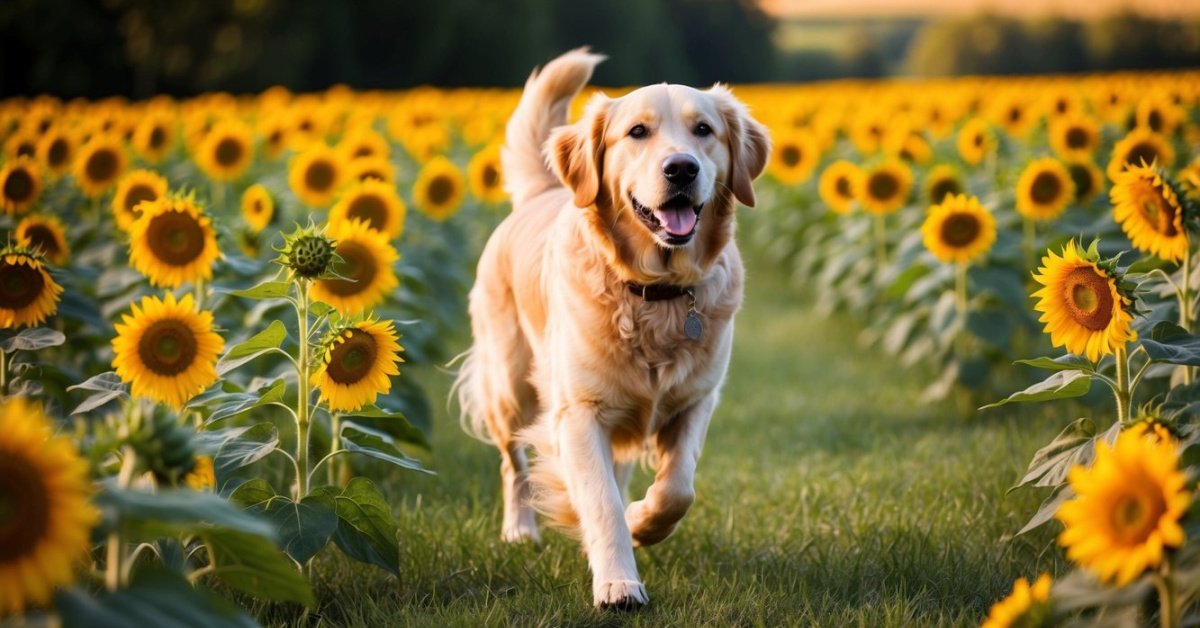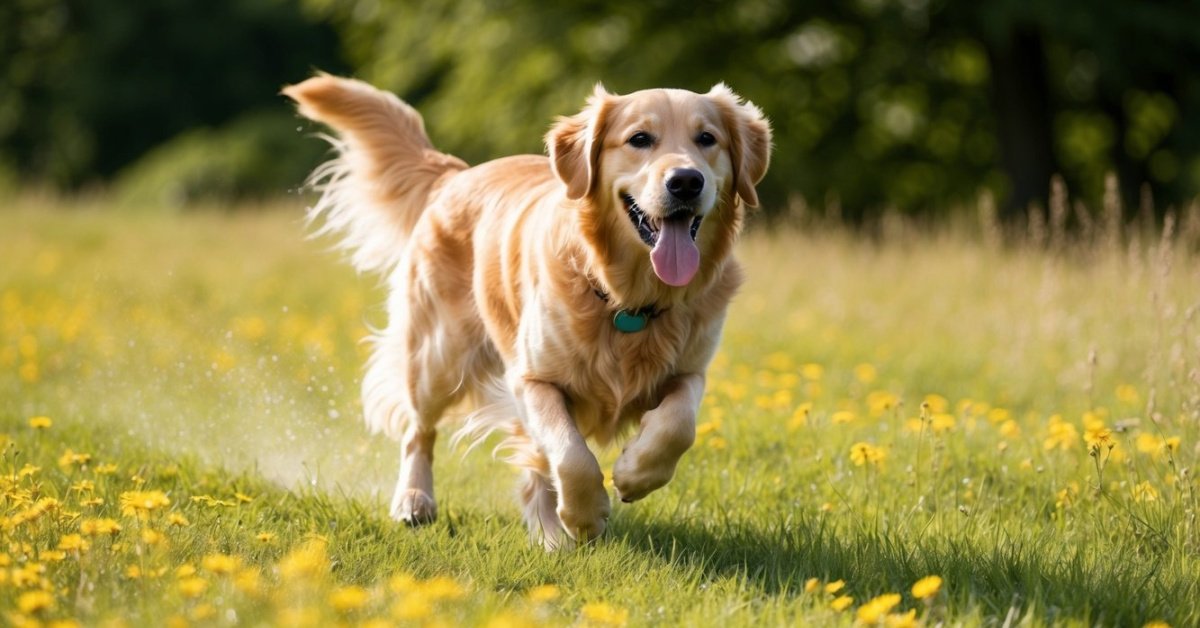Training a Golden Retriever puppy to come when called is one of the most rewarding experiences you can have as a pet owner. These playful and intelligent pups thrive on positive reinforcement, making the training process not just effective but also fun. I’ve found that starting early and using simple techniques can set the stage for a lifelong bond built on trust and communication.
Understanding Your Golden Retriever Puppy
Understanding your Golden Retriever puppy enhances the training experience. Recognizing their traits and the importance of training sets the stage for success.
Breed Characteristics
Golden Retrievers are known for their friendly and intelligent nature. They usually exhibit high energy levels, which makes them playful companions. Their loyalty and eagerness to please make training enjoyable. Socialization is essential, as Golden Retrievers often thrive in family environments, getting along well with kids and other pets. These characteristics foster a quick learning process, especially when using positive reinforcement techniques.
Importance of Training
Training a Golden Retriever puppy fosters good behavior and strengthens the bond between us. Early training encourages obedience and reduces the likelihood of behavioral issues. Consistent commands and routines create familiarity, helping the puppy feel secure. Providing mental stimulation through training also keeps them engaged, promoting a happy and well-adjusted dog. Establishing a strong foundation early on leads to a well-mannered adult dog.
The Basics of Recall Training
Recall training establishes a strong foundation for your Golden Retriever puppy. Using the right techniques will enhance communication and strengthen the bond between us.
Setting the Stage for Success
Creating a positive environment promotes effective recall training. Choose a quiet location with few distractions, like a fenced yard or a quiet park. Start training when your puppy’s energy levels are high, ensuring their attention is focused. Use short training sessions of about 5 to 10 minutes to maintain interest and prevent fatigue. Gradually introduce distractions once your puppy responds reliably in a controlled space.
Tools You’ll Need
Equipping yourself with the right tools makes recall training easier. Here’s a list of essential items:
- High-Value Treats: Select small, tasty rewards that excite your puppy.
- Clicker: Use a clicker for consistent timing when marking desired behavior.
- Long Leash: Get a 15 to 30-foot training leash to give distance while maintaining control.
- Interactive Toys: Have a few toys to keep training engaging and fun.
- Harness: Consider a comfortable harness to avoid strain on the neck during training sessions.
With these tools and a focused approach, you’re set up for success in training your Golden Retriever to come when called.
Step-by-Step Guide to Training
Training a Golden Retriever puppy to come is both simple and enjoyable. By following clear steps, I can foster communication and trust with my puppy.
Using Positive Reinforcement
Using positive reinforcement creates a fun and effective training experience. I reward my puppy with high-value treats or praise whenever it successfully comes to me. Timing matters; I offer rewards immediately to reinforce the desired behavior. Keeping my praise enthusiastic encourages my puppy to associate coming with positive outcomes. I vary the rewards; sometimes I use treats, other times I offer playtime with a favorite toy.
The “Come” Command
The “come” command is crucial for effective recall. I start by choosing a designated word or phrase, like “come” or “here.” During training sessions, I position myself a few feet away from my puppy. I call my puppy’s name first, followed by the command. When my puppy approaches, I reward with treats and praise. Gradually, I increase the distance and practice in different environments to strengthen the command. Consistent practice in a controlled setting helps my puppy learn that coming when called leads to enjoyable experiences.
Common Challenges in Training
Training a Golden Retriever puppy comes with its own set of challenges. Recognizing and addressing these issues creates a smoother training experience.
Distractions During Training
Distractions can interfere with the training process significantly. Common distractions include other animals, loud noises, or moving objects. To reduce these interruptions, I choose quiet, familiar environments for training sessions. Gradually introducing my puppy to busier situations increases their focus. Using high-value treats or engaging toys captures their attention, helping them stay focused on the task at hand.
Overcoming Fear and Anxiety
Fear and anxiety may hinder a puppy’s ability to learn effectively. New environments, loud sounds, or sudden movements can trigger these feelings. To help my puppy feel more secure, I create a calm training atmosphere. I introduce them slowly to different situations, always rewarding them for positive reactions. Building trust through positive reinforcement techniques encourages confidence, allowing my puppy to engage more freely during training sessions.

Tips for Successful Training
- Use high-value treats: Select treats that your puppy loves. These should be more enticing than usual kibble to motivate them to come.
- Practice in safe areas: Begin training sessions in a confined space, like a backyard. This limits distractions and promotes focus.
- Be consistent with commands: Always use the same phrase, “come,” and pair it with your puppy’s name. Consistency helps your puppy learn the command faster.
- Increase distance gradually: Start close and slowly increase your distance from the puppy. This helps them understand the command without overwhelming them.
- Make it fun: Incorporate playtime into training sessions. Playtime enhances your puppy’s mood and makes them more willing to respond.
- Stay positive: Always offer plenty of praise when your puppy successfully comes to you. Positive reactions foster a desire to repeat the behavior.
- Limit distractions: Train when your puppy’s environment is calm. Avoid times when their energy can become too high, such as during playtime or mealtime.
- End on a positive note: Conclude training sessions when your puppy successfully responds to the command. Ending positively keeps them eager for the next session.
- Revisit commands regularly: Consistently reinforce the “come” command even after your puppy masters it. Regular practice maintains their skills and strengthens your bond.
Conclusion
« Exciting Golden Retriever Agility Competitions in 2025: What to Expect and How to Prepare
The Ultimate Golden Retriever Emergency Vet Guide: Be Prepared for Any Health Crisis »
Training my Golden Retriever puppy to come when called has been such a rewarding journey. It’s amazing to see how quickly they respond to positive reinforcement and the bond that forms through this process. With patience and consistency I’ve been able to create a strong foundation for communication and trust.
Every training session is a chance to have fun and strengthen our relationship. I’ve learned that keeping things light and enjoyable makes all the difference. As I continue to practice and reinforce these skills I’m excited to see my puppy grow into a well-mannered companion. Remember it’s all about those little moments of connection that make training worthwhile. Happy training!











